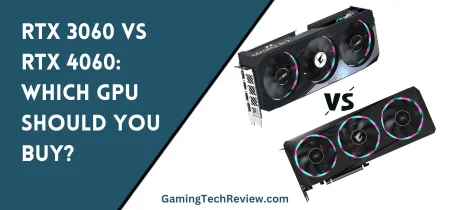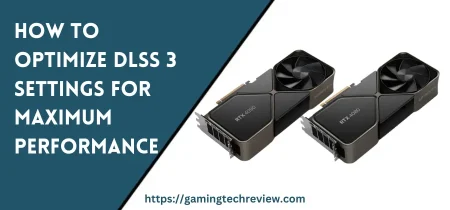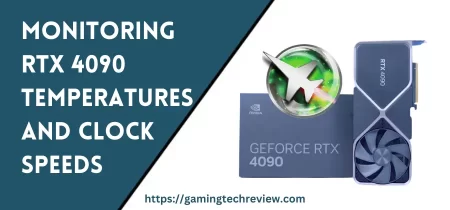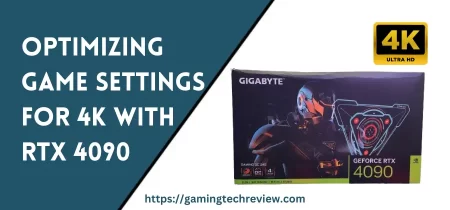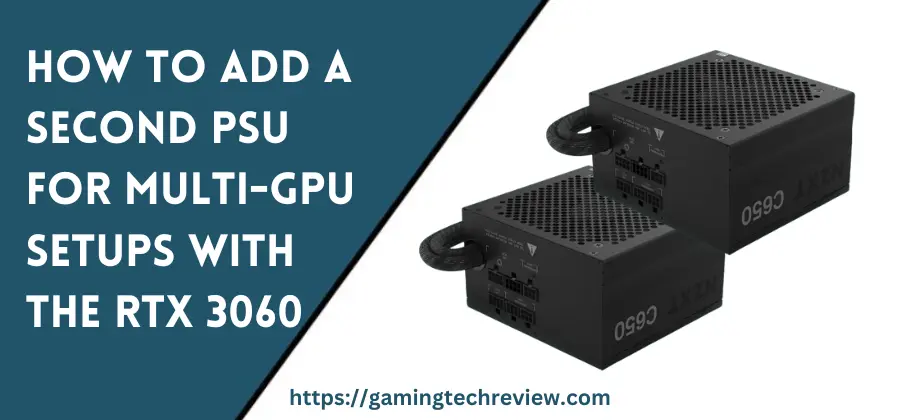
The Nvidia GeForce RTX 3060 is a powerful graphics card capable of delivering high frame rates and max settings at 1080p and 1440p gaming. However, some users want even more graphical horsepower by running two or more RTX 3060 cards together in SLI or NVLink.
To power multiple power-hungry GPUs, a secondary power supply unit (PSU) is often required in addition to the primary PSU that runs the rest of the system components. Adding a second dedicated PSU for the GPUs can provide ample clean and stable power delivery for a multi-card configuration.
In this comprehensive guide, we’ll walk through the steps for adding a second PSU to properly power an NVLink or SLI setup with two or more RTX 3060 cards. We’ll cover PSU requirements and selection, wiring configurations, benchmarking performance, troubleshooting, and much more for a safe and successful dual PSU installation.
PSU Requirements for Multi-GPU Setups
The first consideration when adding a second PSU is calculating the total power draw and ensuring you have ample wattage available across both units. Here are the key power requirements:
- RTX 3060 TDP: The RTX 3060 has a 170W TDP (thermal design power) rating. For two cards, plan on at least 340W for the GPUs alone. For three cards, allow 510W or more just for the GPUs.
- Additional System Power: Factor around 150-300W for the rest of the system including CPU, motherboard, RAM, storage, fans, etc. Power-hungry CPUs like the Intel Core i9 can draw up to 150W. Make sure to budget for max potential power.
- PSU Overhead: Allow around 20% extra overhead to account for PSU efficiency and ensure the units are not running at full capacity. This prevents instability or shutdowns.
- Power Spikes: GPUs and CPUs can draw much more than their rated TDP for milliseconds at a time. These spikes can overload a PSU, so the extra overhead budget helps cover transient spikes.
Given the above, aim for 850-1000W across both PSUs for a dual RTX 3060 setup. For three GPUs, look at 1000-1200W total. A 750W primary and 600W secondary PSU would suffice for most dual-card systems. When selecting units, be sure they are from reputable brands like Corsair, EVGA, or Seasonic and 80 PLUS Gold or better certified for efficiency.
Choosing the Right PSUs
Here are some tips on selecting the right PSU models and wattages for a multi-GPU configuration:
- For the primary PSU, choose a high-quality 850-1000W unit from a top brand that can handle the full system load. This will power the motherboard, CPU, RAM, drives etc.
- For the secondary GPU PSU, a 600-750W unit is ideal. It only needs to power the graphics cards themselves.
- Ensure both PSUs have enough PCIe power connectors for the GPUs. The RTX 3060 requires one 8-pin connector per card.
- Fully modular PSUs make cable management much easier with multi-GPU setups.
- Research professional reviews on sites like Tom’s Hardware when selecting models to ensure they can deliver stable power and run efficiently.
- Avoid cheap off-brand PSUs which can cause system crashes or damage when heavily loaded.
- Consider 80+ Titanium models for maximum efficiency, but these carry a premium price tag.
- Make sure both PSUs are designed to run in tandem and have the required connections. Some lower-end units lack 24-pin slave cables.
Following these PSU selection guidelines will provide clean and reliable power delivery to fully capitalize on the performance of an NVLink or SLI multi-GPU configuration.
Wiring Configurations for Dual PSU Setups
There are a few different wiring approaches that can be taken when connecting two power supply units together:
Parallel Configuration
This involves connecting the 24-pin ATX and 8-pin EPS cables from both PSUs directly to the 24-pin and 8-pin motherboard headers. Each PSU will contribute power simultaneously for a combined output. The downside is lack of isolation between the units.
Master and Slave
One PSU is designated as the master and powers the motherboard, CPU, drives etc. The second PSU is a dedicated slave powering only the GPUs. The slave PSU connects to the master using a 24-pin jumper cable for combined power on/off control. This method provides full isolation.
Dual PSU Adapter Cables
These special adapter cables connect both PSU’s 24-pin cables together and split the load. Some adapters also sync the power on signals allowing both PSUs to be controlled together via the motherboard power button. This maintains isolation without needing a master/slave setup.
Step-by-Step Wiring Instructions
Follow these detailed steps to wire up two PSUs safely:
- Install the main PSU that will power the motherboard, CPU, and primary GPU. This will serve as PSU 1. Do not connect PSU 2 yet.
- Connect just the 24-pin ATX and 8-pin EPS cables from PSU 1 to the motherboard. Also connect all component power cables (SATA, Molex etc).
- Mount the secondary PSU (PSU 2) into the case, but do not connect any of its cables yet.
- Connect the 24-pin cable from PSU 2 to the 24-pin cable from PSU 1 using a dual PSU adapter. This syncs up both units.
- For grounding, connect both PSUs to the same grounded wall outlet. If using separate outlets, connect a grounding wire between the PSU cases.
- Now connect the PCIe power cables from PSU 2 to the second GPU.
- Boot up the system and ensure both PSUs power on together and the second GPU is detected.
- If needed, connect a third or fourth GPU powered only by PSU 2 for maximum isolation.
This provides a safe and controlled method of wiring dual PSUs to power a multi-GPU rig. Always double-check the connections before turning the system on to avoid any mishaps.
Distributing the Load Across Both PSUs
When wiring two PSUs, it’s important to divide the system power load appropriately to avoid overloading one unit. Follow these tips:
- Take inventory of all component power draws and aim to distribute roughly 50% system load to each PSU.
- Power the most power-hungry components like GPUs separately from a lightly loaded PSU.
- Avoid plugging more than 2 high-end GPUs into a single PSU.
- Use PSU wattage meters to validate load distribution if needed. Measure at both idle and under gaming loads.
- If overloading is a concern, upgrade to higher-wattage PSUs. 1000W+ units offer more headroom.
- Make sure both PSUs can operate optimally between 40-80% of their rated capacity for best efficiency.
Properly dividing the system power requirements between both PSUs will avoid instability, crashes, or shutdowns. Always leave a safety buffer.
See Also: How to Calculate Total System Wattage for Your RTX 3060 Build
Benchmarking Multi-GPU Performance
Once the dual PSU setup is wired properly, run some benchmarks to validate performance scaling:
- Use Unigine Heaven and 3DMark Fire Strike for quick GPU benchmarking. Check for artifacting or throttling.
- Monitor GPU temps and clocks with HWInfo64 to ensure ample power. Clocks should hit advertised boost speeds.
- Run real game benchmarks with AAA titles at target resolution and graphics settings. This is the true test of multi-GPU scaling.
- Compare benchmark scores with one GPU vs two. Performance should nearly double in ideal scenarios.
- Try overclocking the GPUs if temperatures permit. This may require bumping voltages for stability.
- CPU bottlenecks can limit multi-GPU scaling. Overclocking the CPU may help unleash the full potential.
- If performance is lower than expected, check for driver issues, PCIe bandwidth limitations, or game SLI support.
Use monitoring tools like Afterburner and CPU-Z to fine-tune the system for maximum dual GPU performance. The added power can achieve buttery smooth 4K gaming.
Cable Management Tips
With two PSUs and twice as many cables, careful cable management is crucial for both aesthetics and airflow. Follow these tips:
- Only connect the minimum cables needed from each PSU to reduce clutter. Fully modular helps here.
- Plan out cable runs before wiring everything up. Visualize the cleanest runs from each component to the PSUs.
- Use zip ties, velcro straps, or cable sleeves to group and hide cables together for a cleaner look.
- Route PCIe power cables directly from each PSU to the associated GPU for simplicity.
- Tuck cables behind the motherboard tray and through rubber grommets whenever possible.
- If there are empty drive bays, hide excess cabling behind the bay shields.
- Avoid cable stress or tight bend radii which can damage cables over time.
- Place the secondary PSU in a rear or bottom mount if possible. Run its cables directly through a grommet.
- Leave space between the PSUs and other components for sufficient airflow.
Proper cable routing improves case cooling, allows for future upgrades or maintenance, and gives a professional finished appearance.
Troubleshooting Dual Power Supply Issues
If your multi-GPU system powered by two PSUs is exhibiting stability issues, crashes, or subpar performance, here are some troubleshooting tips:
- Stress test both PSUs independently first to rule them out as a cause.
- Try swapping the PSUs powering the motherboard vs GPUs. Faults may manifest when heavily loaded.
- Verify all PSU cables are fully inserted. Loose connections can cause shutdowns or reboots.
- Test system components individually to isolate any faulty parts. GPU, Motherboard, RAM etc.
- Reseat all power connectors and use compressed air to clean any debris in sockets.
- Eliminate points of failure by testing with just one GPU and PSU. Then add components back one by one.
- Update BIOS, chipset, and GPU drivers. Also disable any overclocks at least temporarily.
- If using cable splitters, try running separate cables for each connection instead.
- Verify the 24-pin jumper cable is working properly between both PSUs. Swap for a known good cable.
- Check for short circuits or exposed solder points on PSU cables or hardware.
Isolating the issue through systematic component and cabling testing can identify problems with dual PSU configurations. Don’t overlook simple solutions and gradually scale components back up once stability is confirmed.
Conclusion
Adding a second dedicated power supply unit is an effective way provide ample and stable power delivery for multi-GPU gaming rigs. With the right PSU selection, smart wiring and load planning, thermal headroom, and cable management, an RTX 3060 dual GPU configuration can achieve incredible performance for smooth 4K and VR gaming. There are some additional steps compared to a single PSU build, but the massive visual upgrade is worth the effort. Just take the process slowly, double-check all connections, benchmark thoroughly, and tweak any instabilities with some selective troubleshooting. Following this comprehensive guide will help ensure your dual PSU RTX 3060 setup runs at peak efficiency.






